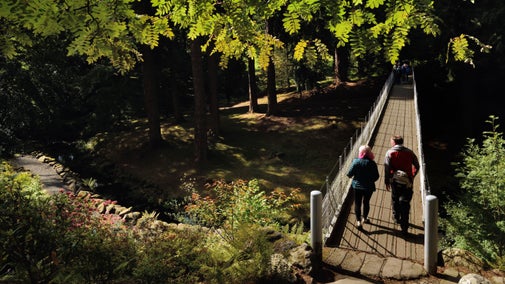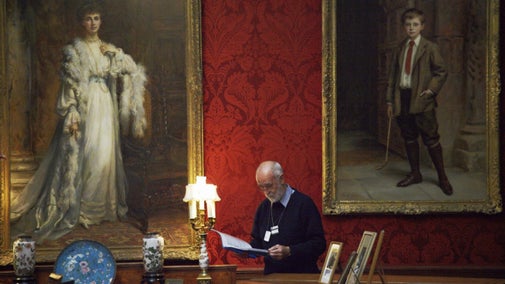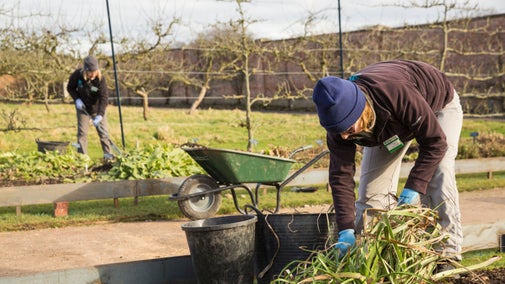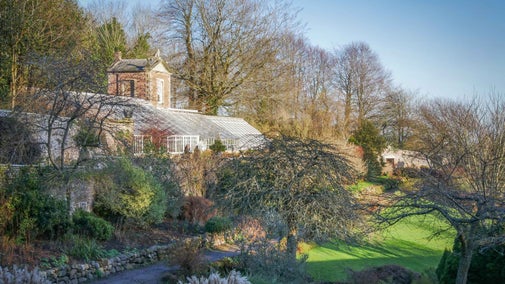
Discover more at Cragside
Find out when Cragside is open, how to get here, the things to see and do and more.

Cragside House sits at the heart of an enormous landscaped garden. With spectacular vision, Victorians William and Margaret Armstrong transformed the grounds from a bare moorside into a fantasy mountain landscape.
Designed for beauty and function you’ll discover towering trees, overflowing flower beds, trickling burns, dramatic water cascades as well as engineered lakes that were created to harness the power of water. Explore the Rock Garden, Formal Garden and Pinetum, and experience a grounds covered in millions of trees and rhododendrons.
If you’re looking for a peaceful stroll where you feel surrounded by nature, head for the Pinetum. As you wander across the timber bridge, you will feel like you are stepping into another world, as towering giant trees stretch up to the sky in front of you. Follow the weaving path alongside the babbling burn, where you may spot birds swooping and diving across the top of the water. At this time of year, the sun can stream between the branches of some of the tallest trees of their kind in the country creating a cathedral-like affect across the woodland floor. Don’t forget to look out for ‘Douglas’, our friendly green giant nestled in the trees.
The Rock Garden surrounds Cragside House. You can follow the grand stone steps that criss-cross up the crag towards the House. There’s lots of nooks and crannies to explore and there’s spectacular views of the Debdon Valley and the Iron Bridge from the top.
From the end of the May and into June, the Rock Garden puts on a colourful rhododendron show, flowering a week or so before the rest of the grounds burst into bloom. During the summer months the mechanical cascades are turned on and you can experience the peaceful sound of the water trickling between the rock.
It’s well worth taking a short hike up the stone steps from the Iron Bridge to the Formal Garden. Once at the top you will be welcomed by colourful flower beds and lots of benches to rest your legs. The gardeners have brought back the fashionable Victorian displays. Every plant and flower has been carefully selected for its bright, bold colour and meticulously planted in straight lines and geometric patterns to bring uniformity to the beds.
Delight your senses at the small sensory garden where you can touch, smell and shake some of the plants. Find the ferneries, with its petit doorway and pond on the top tier of the garden.
The Gorge is open between April and October each year. This scenic but rugged chasm takes you from the Pinetum to the Powerhouse, where you can find out more about how Armstrong turned water into light. Sturdy footwear is essential as you climb down the steps that have been carved into the rock and cross a timber bridge. From here you will witness the sound of rushing water tumbling into the river below. This impressive noise abruptly stops as you follow the wooden walkway around the cliff.

There are three engineered lakes which were created to harness the power of water.
Tumbleton Lakes
Tumbleton Lake is next to the visitor centre. At a little over a mile round, it’s the perfect walk for stretching your legs if you’ve been in the car for a while. At the top of the lake, you will see a view of the water and the towering trees in the distance, giving you a sense of the size and scale of the grounds. If you would like to walk a little further, Tumbleton Lake is also part of the waymarked Armstrong Trail which takes you on a tour of the lower estate.
Nelly’s Moss
High up on the grounds, is Nelly’s Moss Lakes. This popular part of the grounds is a haven for wildlife. The Greylag Geese and Swans make a return in the spring, and it’s one of the best places to spot emerging frogs and toads. You can follow the Nelly’s Moss walk around the lakes – look out for blue waymarkers to help you find you way.

Find out when Cragside is open, how to get here, the things to see and do and more.
Dog are welcome at Cragside - and we love meeting them too. With over 40 miles of footpaths, Cragside is great place to stretch your legs with your four-legged friend. Read our top tips to help make the most of your visit.

We want everyone to feel welcome when visiting Cragside. In this article we've pulled together some top tips to help you get the most out of your visit.

Cragside is often considered to be Britain’s original smart home. Discover more about the creation of Cragside and the people who made the remarkable place we know today.

Volunteering at Cragside is a great way to use your experience and skills or learn something new. Find out more about the volunteer roles available and how you can apply to join the team.

Discover our gardeners’ top tips so you can make the most of your garden, plot or window box.

Embrace frosty mornings, glistening landscapes, and tranquil woodland walks across historic estates and dramatic scenery. From snow-dusted gardens to crisp, clear views, experience the serene beauty and seasonal magic that winter brings.
